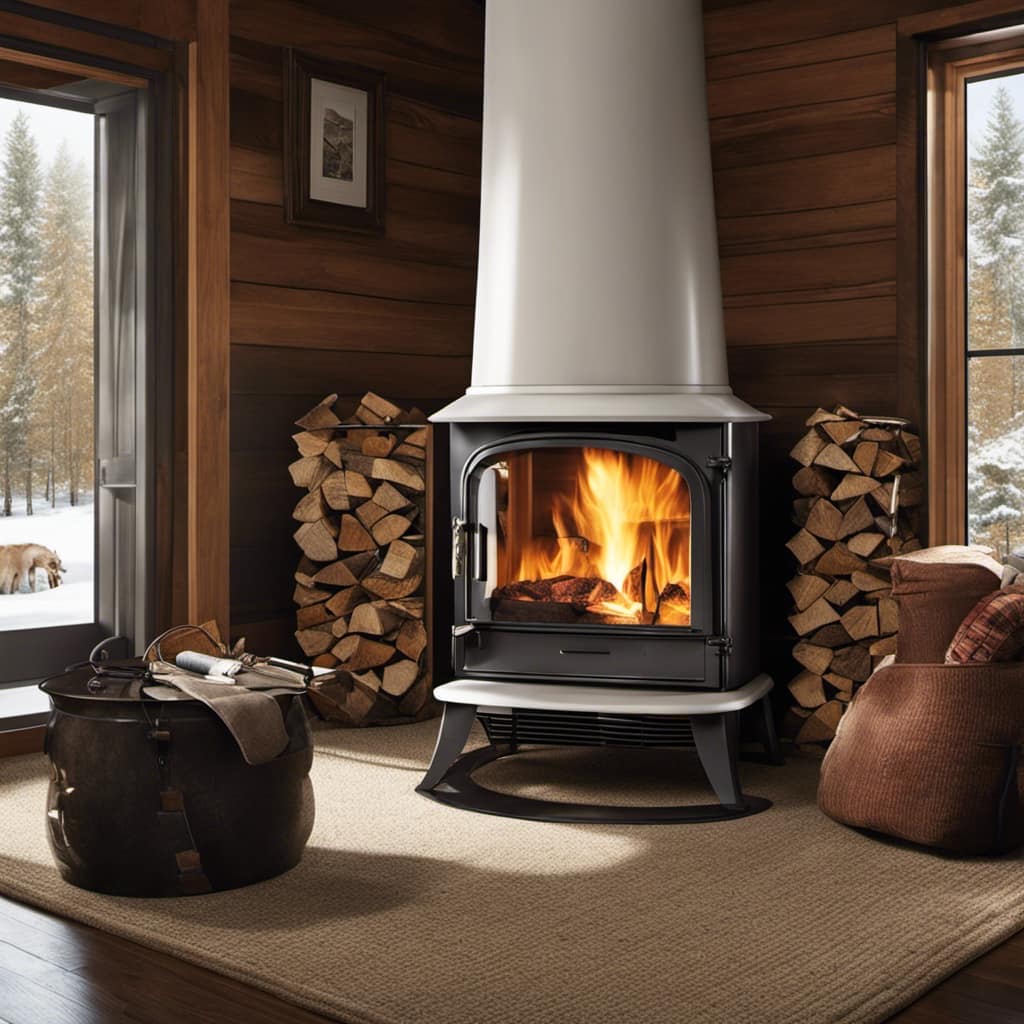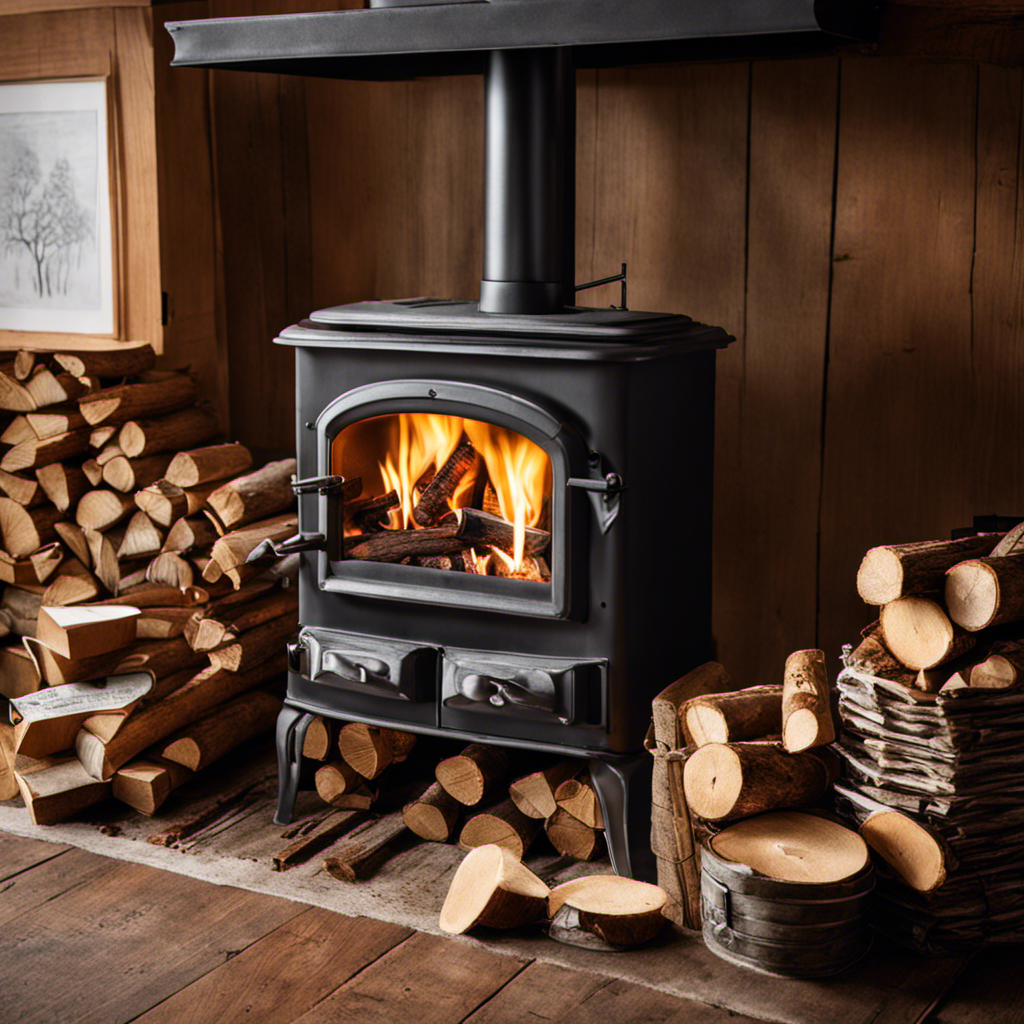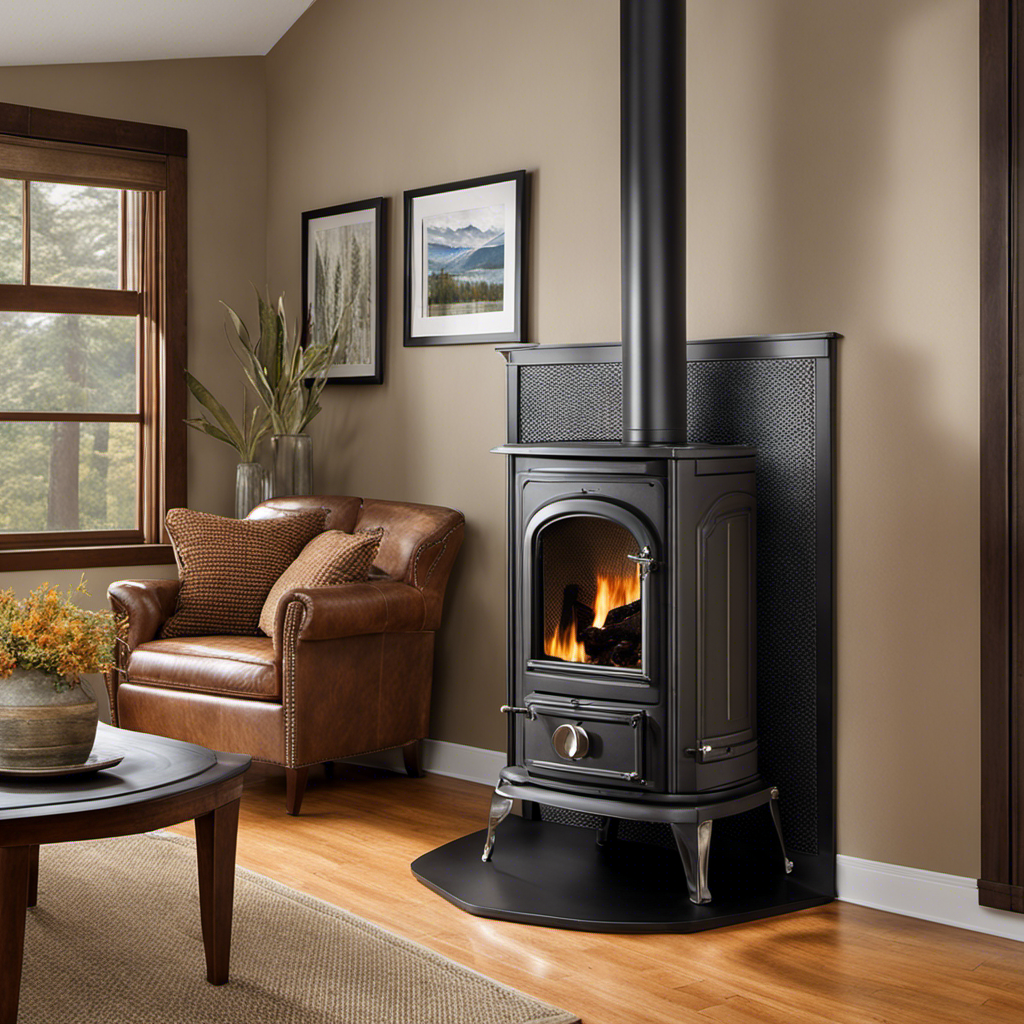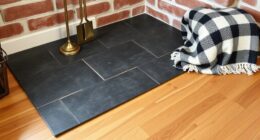Are you aware that ensuring proper airflow is crucial for a wood stove to operate effectively and safely?
In this article, I’ll guide you through the process of regulating air flow in your wood stove, ensuring optimal combustion and maximum heat output.
By evaluating and adjusting the primary and secondary air controls, you’ll be able to achieve efficient burning and reduce harmful emissions.
Let’s dive into the technicalities of maintaining and cleaning your wood stove’s air flow mechanisms for a cozy and eco-friendly heating experience.
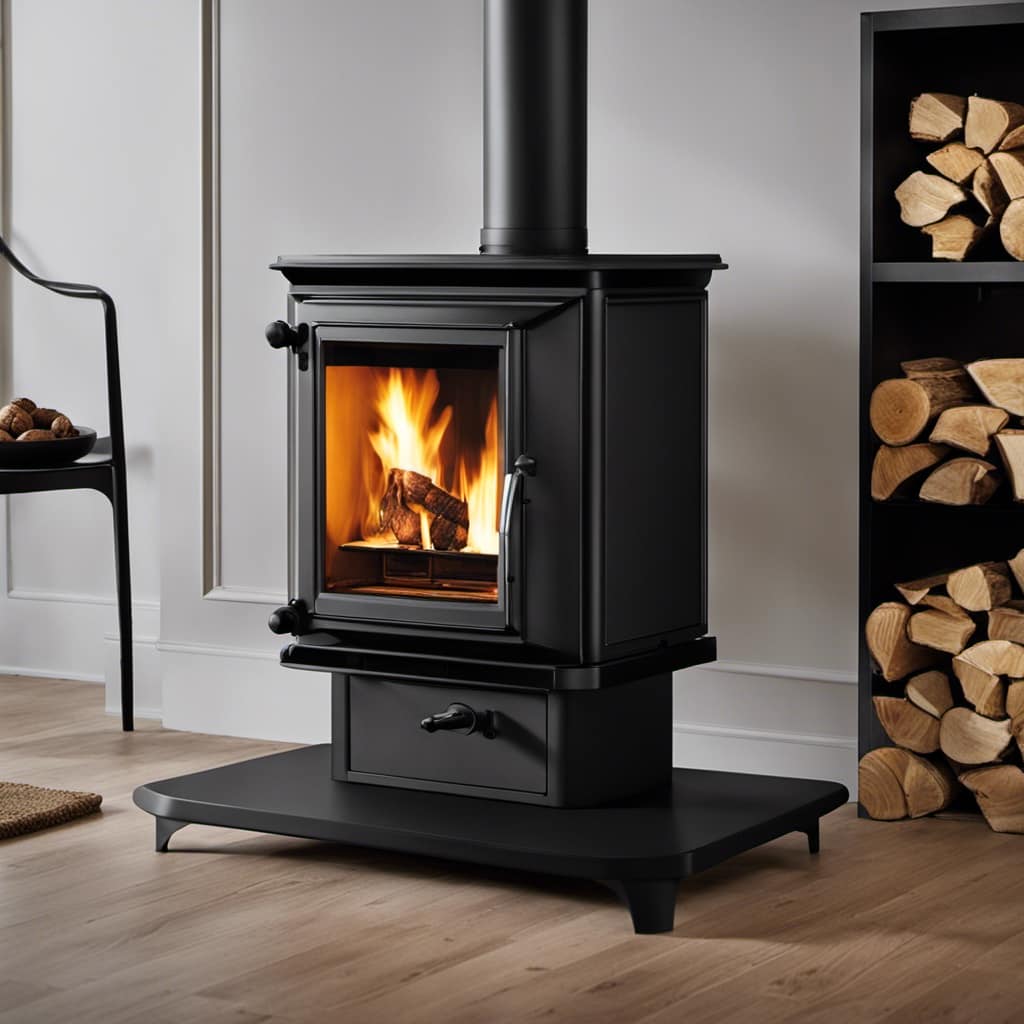
Key Takeaways
- Proper air flow is crucial for efficient and safe wood stove operation.
- Observing flame intensity and direction can help evaluate air flow.
- Adjusting the primary and secondary air intake controls is important for optimal combustion.
- Regular maintenance and cleaning of air flow mechanisms is necessary for efficient operation.
Understanding the Importance of Air Flow in a Wood Stove
I’m learning about the importance of air flow in a wood stove and how to regulate it.
Proper ventilation is crucial when it comes to operating a wood stove. Without adequate air flow, several potential dangers can arise. Firstly, insufficient air flow can result in incomplete combustion, leading to the production of harmful gases like carbon monoxide. This odorless gas can be lethal if inhaled in high concentrations.
Additionally, inadequate air flow can cause excessive creosote buildup in the chimney, increasing the risk of chimney fires. It can also result in poor heat output and inefficient burning, wasting fuel and money.
Therefore, understanding and maintaining the proper air flow in a wood stove is essential for safety, efficiency, and optimal performance.
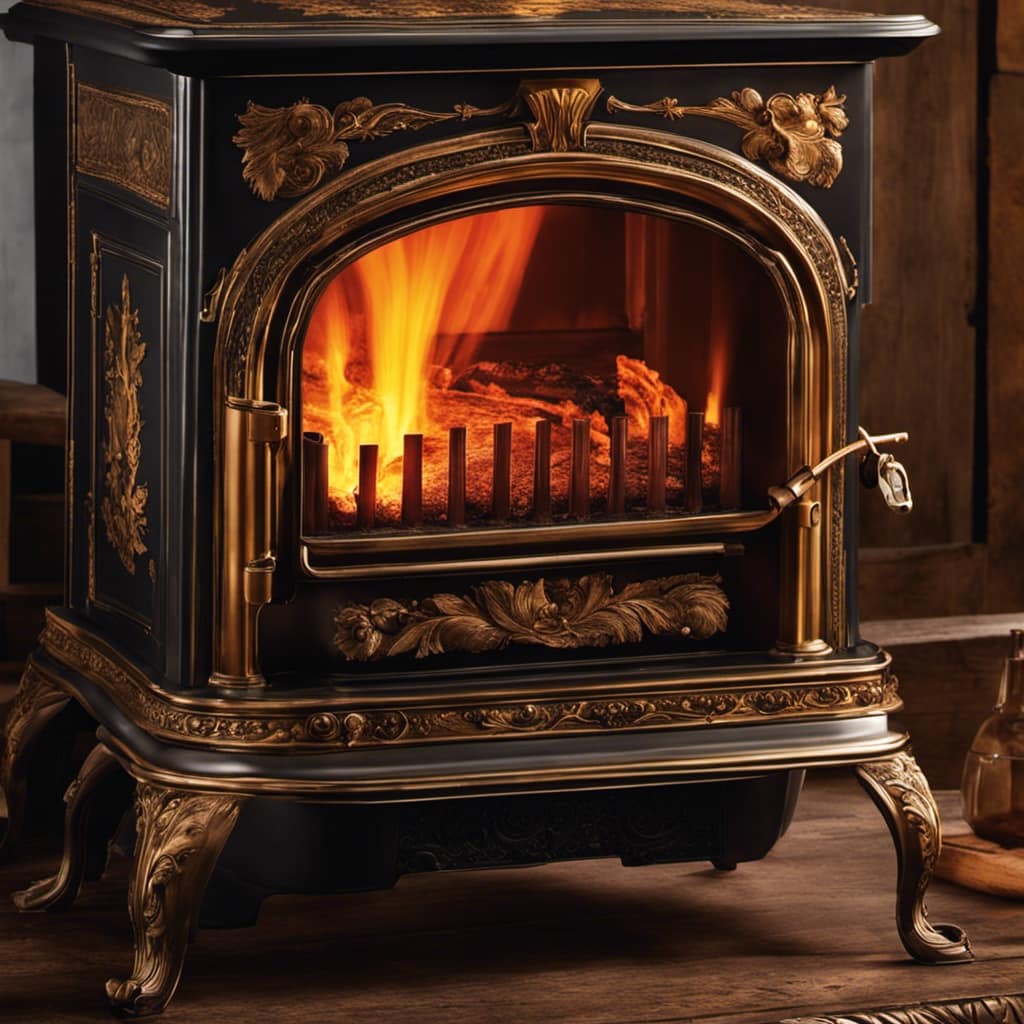
Evaluating the Current Air Flow in Your Wood Stove
To properly evaluate the current air flow in your wood stove, start by observing the flame intensity and direction. This will give you a good indication of how well the air is flowing through your stove.
Here are four key factors to consider when evaluating air flow and troubleshooting any problems:
-
Flame intensity: A strong and steady flame indicates a good air flow, while a weak or flickering flame may suggest a restriction in the air supply.
-
Flame direction: The flame should be directed towards the back of the stove. If it’s being pushed towards the front or sides, it could mean that the air flow is imbalanced or blocked.

-
Smoke production: Excessive smoke can be a sign of poor air flow, indicating incomplete combustion. This can lead to reduced heat output and increased air pollution.
-
Heat output: If your stove isn’t producing enough heat, it could be due to insufficient air flow. Proper air flow ensures efficient burning and maximum heat transfer.
Adjusting the Primary Air Intake for Optimal Combustion
In order to achieve optimal combustion, I need to adjust the primary air intake and ensure that the air is flowing smoothly through the wood stove.
Optimizing combustion efficiency is crucial for a wood stove to function effectively and produce maximum heat output while minimizing emissions.
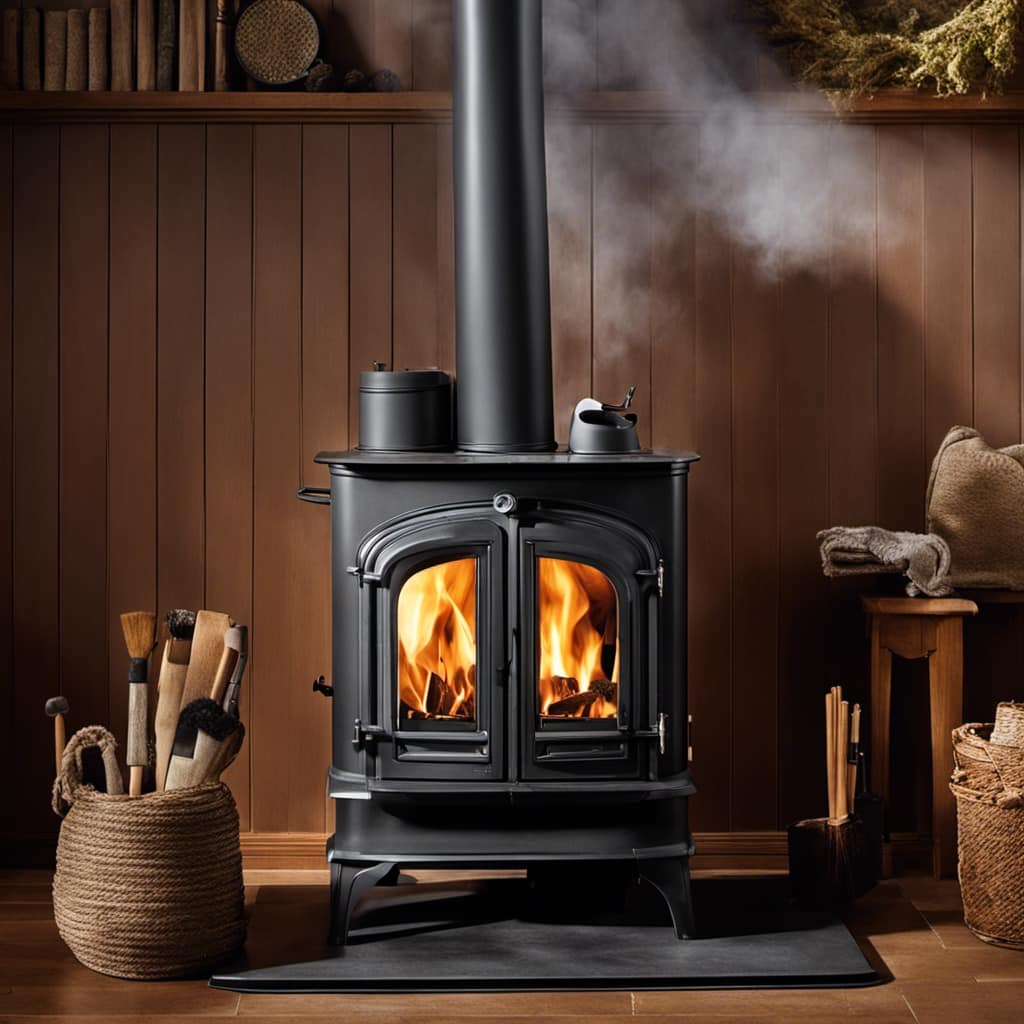
When troubleshooting air flow issues, it’s important to check the primary air intake vents for any blockages or obstructions.
These vents control the amount of oxygen supplied to the fire, which is essential for proper combustion.
Adjusting the primary air intake involves finding the right balance between too much and too little air.
Too much air can result in a weak, inefficient fire, while too little air can cause incomplete combustion and the production of harmful byproducts.

Fine-Tuning the Secondary Air Control for Efficient Burning
Adjusting the secondary air control is essential for efficient burning, as it allows for better regulation of oxygen flow and promotes complete combustion. The secondary air control, often located at the back or top of the wood stove, works in conjunction with the primary air intake to optimize the burning process.
To maintain the secondary air control and troubleshoot any air flow issues, follow these steps:
-
Clean the air control mechanism regularly to prevent buildup of ash or debris that may obstruct the flow of air.
-
Check for any leaks or gaps in the seals around the air control to ensure proper air flow.
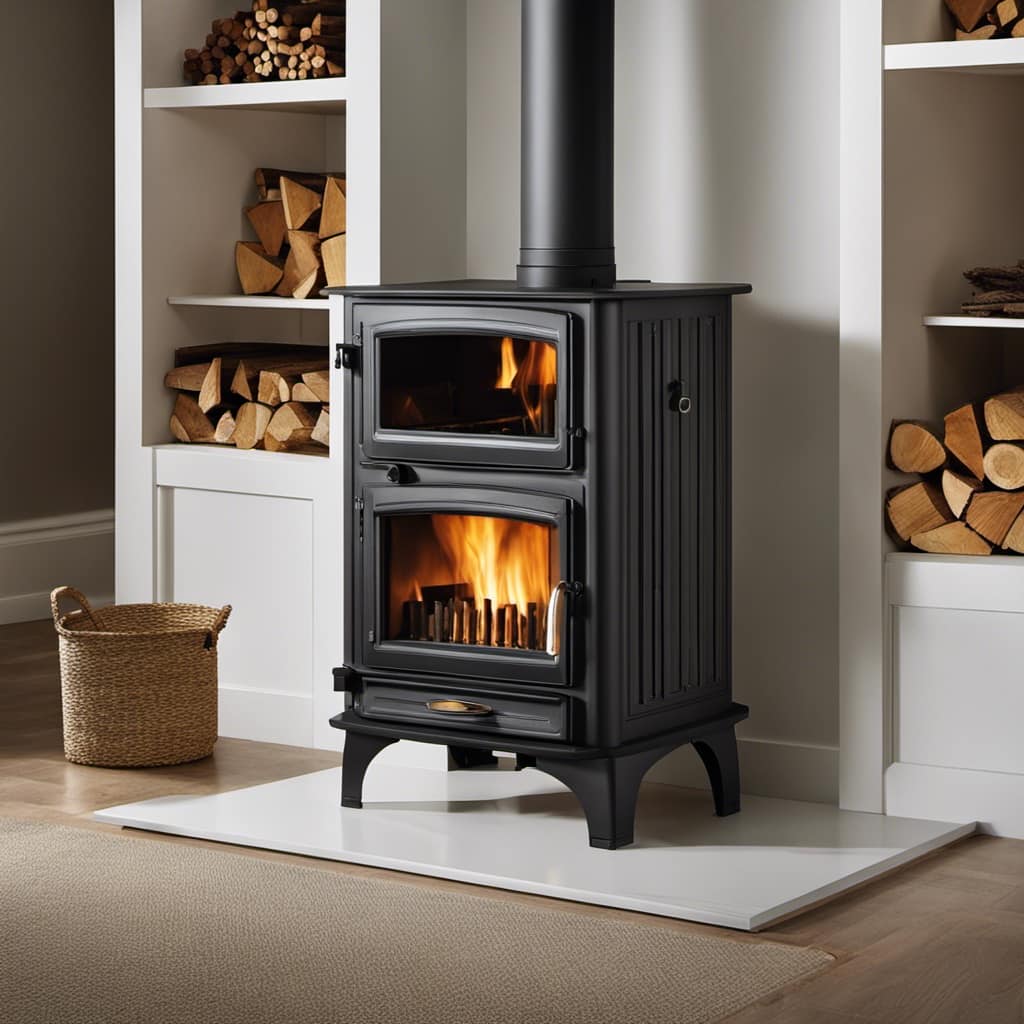
-
Adjust the secondary air control based on the burn rate desired and the type of wood being burned.
-
If experiencing poor combustion or excessive smoke, consult the manufacturer’s guidelines or seek professional assistance to diagnose and rectify the issue.
Maintaining and Cleaning Your Wood Stove’s Air Flow Mechanisms
I regularly clean and inspect the air flow mechanisms of my wood stove to ensure optimal performance. Proper maintenance of these mechanisms is crucial for the efficient operation of a wood stove.
Cleaning techniques for the air flow mechanisms are relatively simple, but they require attention to detail. One important step is to remove any debris or ash that may have accumulated in the air vents or channels. This can be done using a small brush or vacuum cleaner.

Another common issue with air flow in wood stoves is a blocked chimney or flue. Regular inspection of these components is necessary to identify and resolve any blockages.
Troubleshooting common air flow issues also involves checking the seals around the stove doors and ensuring they’re tight.
Frequently Asked Questions
How Often Should I Clean the Air Flow Mechanisms of My Wood Stove?
I clean the air flow mechanisms of my wood stove regularly to prevent clogs. Signs of clogged air flow include reduced heat output and increased smoke. Cleaning frequency varies but it’s important to maintain good air flow for efficient burning.
Can I Use a Wood Stove Without Adjusting the Primary Air Intake and Secondary Air Control?
Can a wood stove be used without adjusting the primary air intake and secondary air control? Adjusting these controls is crucial in increasing efficiency and optimizing combustion, allowing for a more effective and controlled burn.
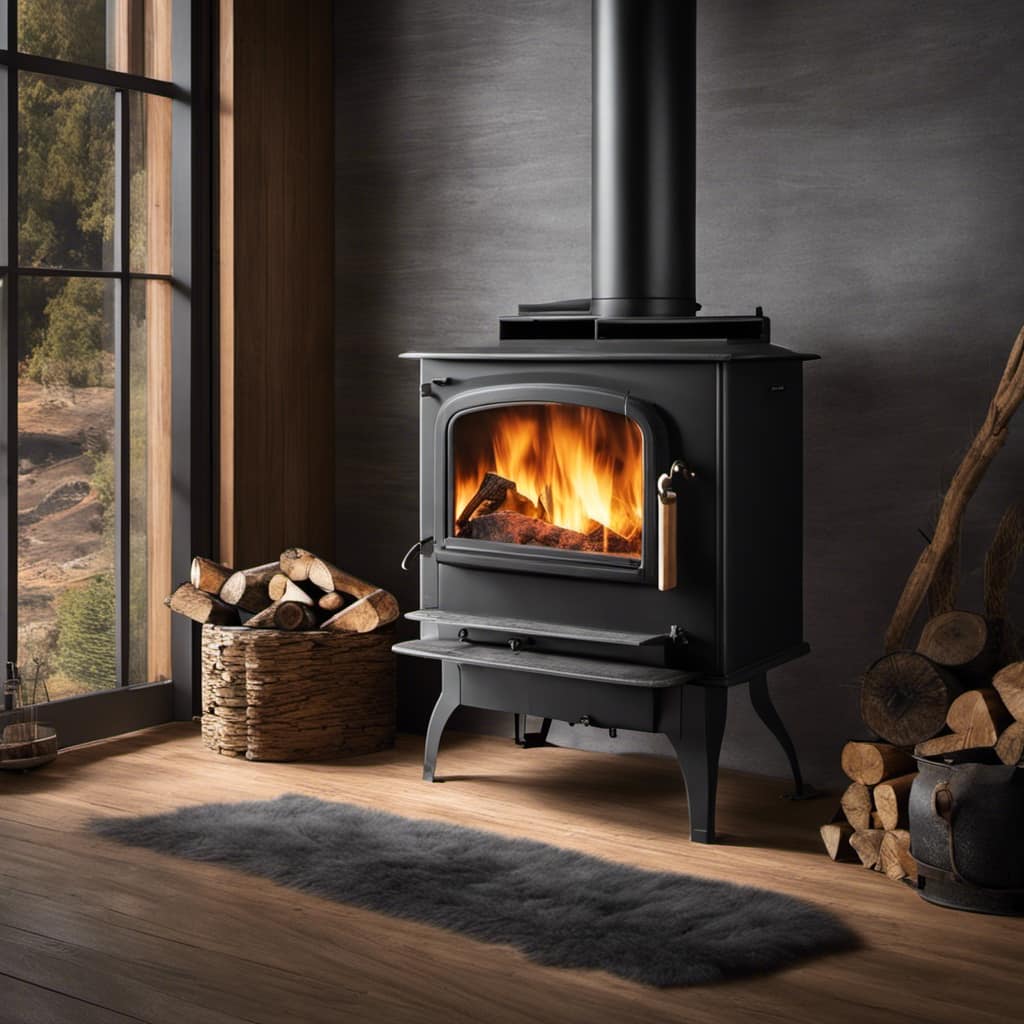
What Are the Potential Consequences of Inadequate Air Flow in a Wood Stove?
Inadequate air flow in a wood stove can lead to increased smoke production and poor combustion efficiency. It is important to regulate air flow properly to ensure optimal performance and reduce negative consequences.
Is It Possible to Increase the Air Flow in a Wood Stove Without Making Any Adjustments?
Increasing air flow in a wood stove without adjustments is not possible. Regulating air flow is essential for increasing efficiency and maintaining optimal temperature. It ensures proper combustion and prevents overheating or insufficient heat.
Are There Any Safety Precautions I Should Take When Adjusting the Air Flow Mechanisms of My Wood Stove?
When adjusting air flow in a wood stove, it’s crucial to prioritize safety. Take precautions like wearing heat-resistant gloves and using a tool to avoid burns. Regular maintenance of the mechanisms is also necessary.
Conclusion
In conclusion, mastering the art of regulating air flow in your wood stove is like conducting a symphony of warmth and efficiency.

By understanding the importance of air flow, evaluating and adjusting the primary and secondary air intake, and maintaining the mechanisms, you can ensure optimal combustion and efficient burning.
So, grab your conductor’s baton and let the harmonious dance of air and flames transform your wood stove into a true masterpiece.
Growing up surrounded by the vast beauty of nature, Sierra was always drawn to the call of the wild. While others sought the comfort of the familiar, she ventured out, embracing the unpredictable and finding stories in the heartbeat of nature.
At the epicenter of every remarkable venture lies a dynamic team—a fusion of diverse talents, visions, and passions. The essence of Best Small Wood Stoves is crafted and refined by such a trio: Sierra, Logan, and Terra. Their collective expertise has transformed the platform into a leading authority on small wood stoves, radiating warmth and knowledge in equal measure.

